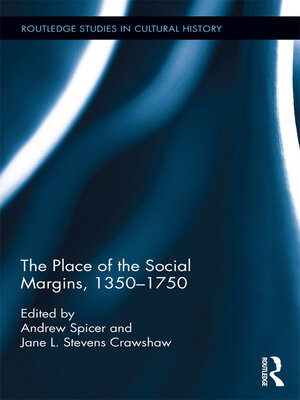The Place of the Social Margins, 1350-1750
ebook ∣ Routledge Studies in Cultural History
By Andrew Spicer

Sign up to save your library
With an OverDrive account, you can save your favorite libraries for at-a-glance information about availability. Find out more about OverDrive accounts.
Find this title in Libby, the library reading app by OverDrive.



Search for a digital library with this title
Title found at these libraries:
| Library Name | Distance |
|---|---|
| Loading... |
This interdisciplinary volume illuminates the shadowy history of the disadvantaged, sick and those who did not conform to the accepted norms of society. It explores how marginal identity was formed, perceived and represented in Britain and Europe during the medieval and early modern periods. It illustrates that the identities of marginal groups were shaped by their place within primarily urban communities, both in terms of their socio-economic status and the spaces in which they lived and worked. Some of these groups – such as executioners, prostitutes, pedlars and slaves – performed a significant social and economic function but on the basis of this were stigmatized by other townspeople. Language was used to control and limit the activities of others within society such as single women and foreigners, as well as the victims of sexual crimes. For many, such as lepers and the disabled, marginal status could be ambiguous, cyclical or short-lived and affected by key religious, political and economic events. Traditional histories have often considered these groups in isolation. Based on new research, a series of case studies from Britain and across Europe illustrate and provide important insights into the problems faced by these marginal groups and the ways in which medieval and early modern communities were shaped and developed.







